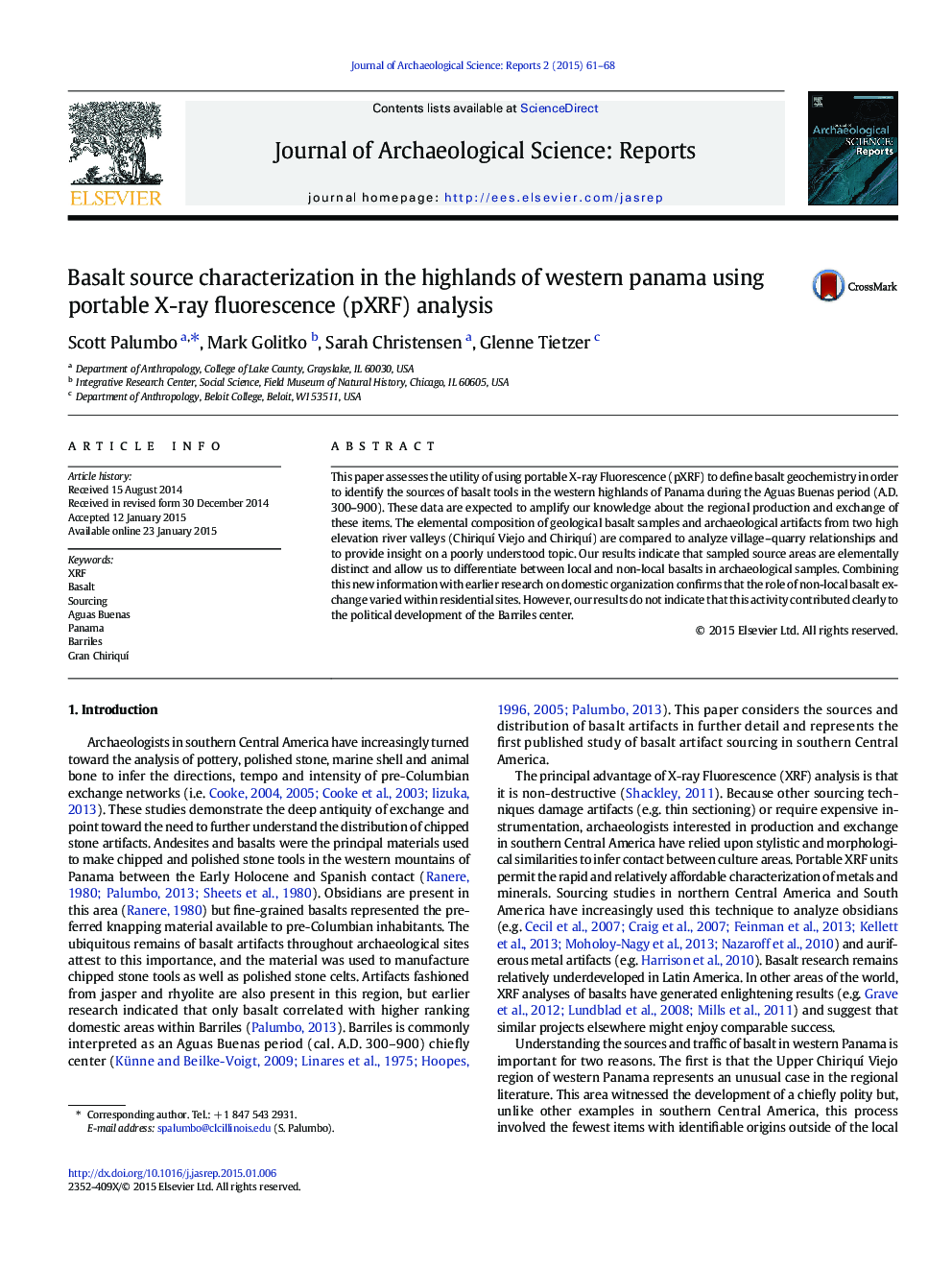| Article ID | Journal | Published Year | Pages | File Type |
|---|---|---|---|---|
| 10499987 | Journal of Archaeological Science: Reports | 2015 | 8 Pages |
Abstract
This paper assesses the utility of using portable X-ray Fluorescence (pXRF) to define basalt geochemistry in order to identify the sources of basalt tools in the western highlands of Panama during the Aguas Buenas period (A.D. 300-900). These data are expected to amplify our knowledge about the regional production and exchange of these items. The elemental composition of geological basalt samples and archaeological artifacts from two high elevation river valleys (Chiriquà Viejo and ChiriquÃ) are compared to analyze village-quarry relationships and to provide insight on a poorly understood topic. Our results indicate that sampled source areas are elementally distinct and allow us to differentiate between local and non-local basalts in archaeological samples. Combining this new information with earlier research on domestic organization confirms that the role of non-local basalt exchange varied within residential sites. However, our results do not indicate that this activity contributed clearly to the political development of the Barriles center.
Related Topics
Social Sciences and Humanities
Arts and Humanities
History
Authors
Scott Palumbo, Mark Golitko, Sarah Christensen, Glenne Tietzer,
